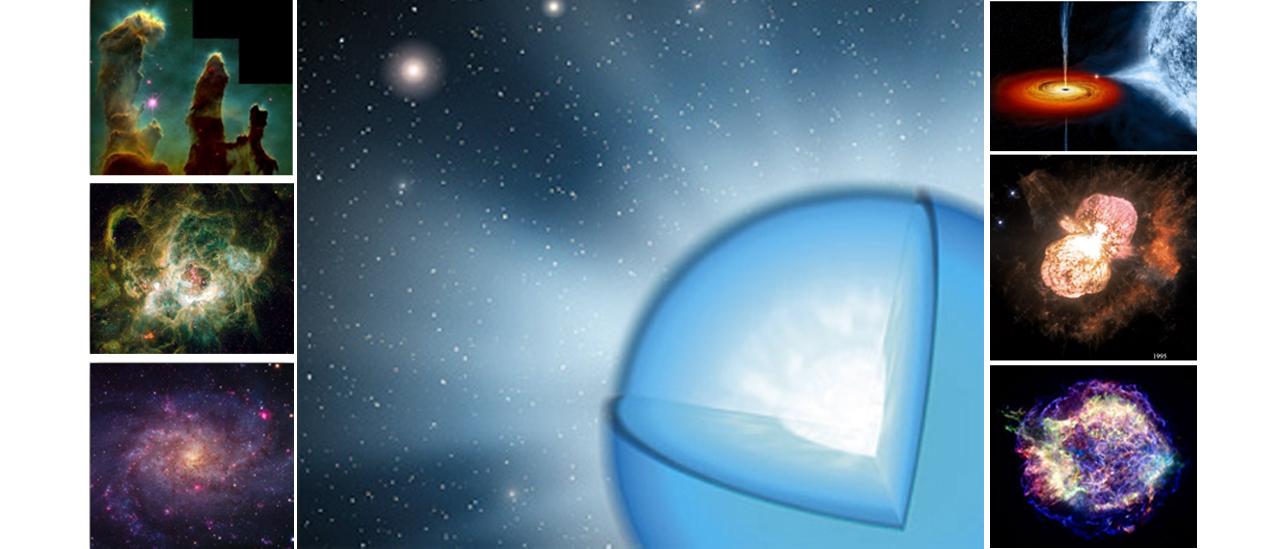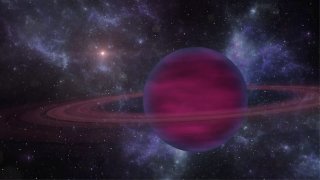Subvenciones relacionadas:
General
Las estrellas masivas son objetos claves para la Astrofísica. Estas estrellas nacen con más de 8 masas solares, lo que las condena a morir como Supernovas. Durante su rápida evolución liberan, a través de fuertes vientos estelares, gran cantidad de material procesado en su núcleo y, en determinadas fases evolutivas, emiten gran cantidad de radiación ionizante. Como consecuencia, las estrellas masivas juegan un papel fundamental en muchos aspectos de la evolución del Cosmos; p. ej., son uno de los motores principales de la evolución química y dinámica de las galaxias y han sido propuestas como agentes clave en la reionización del Universo. A lo largo de su evolución, se asocian con los objetos estelares mas extremos (estrellas O y WR; supergigantes azules y rojas; variables luminosas azules; agujeros negros, estrellas de neutrones y magnetars; estrellas binarias masivas de rayos X y gamma). También son el origen de los GRBs de larga duración y están asociadas con las recientes detecciones de ondas gravitacionales. Desde un punto de vista practico, las estrellas masivas son valiosos indicadores de abundancias y distancias en galaxias externas, incluso mas allá del Grupo Local. Ademas, la interpretación de la luz emitida por regiones HII y galaxias starburst se basa en nuestro conocimiento del efecto que produce la radiación ionizante emitida por las estrellas masivas en el medio interestelar.
Este proyecto esta enfocado a la búsqueda, observación y análisis de estrellas masivas en galaxias cercanas con la finalidad de proporcionar un marco empírico solido que nos permita entender sus propiedades físicas en función de parámetros clave que gobiernan su evolución (tales como masa, rotacion, metalicidad, perdida de masa e interacción binaria). Para ello, el proyecto se basa en observaciones de gran calidad obtenidas con telescopios de los observatorios de Canarias y de la ESO, complementadas con otras observaciones de interés proporcionadas por misiones espaciales como Gaia, HST, IUE y TESS. Como una parte clave de este proyecto, observaciones espectroscópicas de estrellas masivas en distintos estados evolutivos y localizadas en entornos de diferente metalicidad son analizadas haciendo uso de la ultima generación de códigos de atmósfera estelar y herramientas de análisis espectroscópico cuantitativo optimizadas para estrellas masivas con la finalidad de extraer la mayor cantidad de información empírica posible sobre parámetros estelares y abundancias.
Las principales lineas activas en el proyecto son:
- la observación y análisis de grandes muestras de estrellas OB en la Vía Láctea;
- la exploración de la población estelar masiva localizada en regiones oscurecidas de la Vía Láctea;
- la búsqueda, observación y análisis de estrellas masivas extragalácticas, poniendo un especial énfasis en galaxias de baja metalicidad;
- el desarrollo y uso de modelos de atmósfera, modelos atómicos y herramientas numéricas para el análisis de estrellas masivas.
Miembros
Resultados
- Como parte de su tesis, S.R. Berlanas ha publicado una serie de tres articulos en los que se estudian en detalle varios aspectos relacionados con la poblacion estelar masiva de la asociacion Cygnus OB2 utilizando espectroscopia obtenida con INT y datos de paralajes proporcinoados por Gaia DR2.
- G. Holgado ha finalizado su tesis doctoral en la que presenta un estudio espectroscopico detallado de la muestra de estrellas O Galacticas más grande considerada hasta el momento.
- Hemos investigado en detalle la variabilidad espectroscopica y fotometrica de dos supergigantes azules (rho Leo y kappa Cas) a partir de espectroscopia multiepoca HERMES/FIES/SONG y datos fotometricos proporcionados por las misiones Hipparcos y K2. Nuestros analisis apuntan hacia la confirmacion de la existencia de "internal gravity waves" en este tipo de estrellas.
- Hemos encontrado dos nuevas acumulaciones de estrellas masivas en la Via Lactea con un alineamiento casual (MASGOMAS-6A+B). Localizadas a una longitud Galactica de 38 grados, la primera acumulacion (a 3.9 kpc) continene 2 estrellas WR y varias enanas O, mientras que la segunda (a 9.6 kpc) contine una LBV y una poblacion evolucionada de supergigantes azules.
- Hemos contribuido a presentar un censo actualizado de la población estelar masiva del cúmulo del Quintuplete, uno de los cúmulos jovenes más masivos en la Galaxia.



